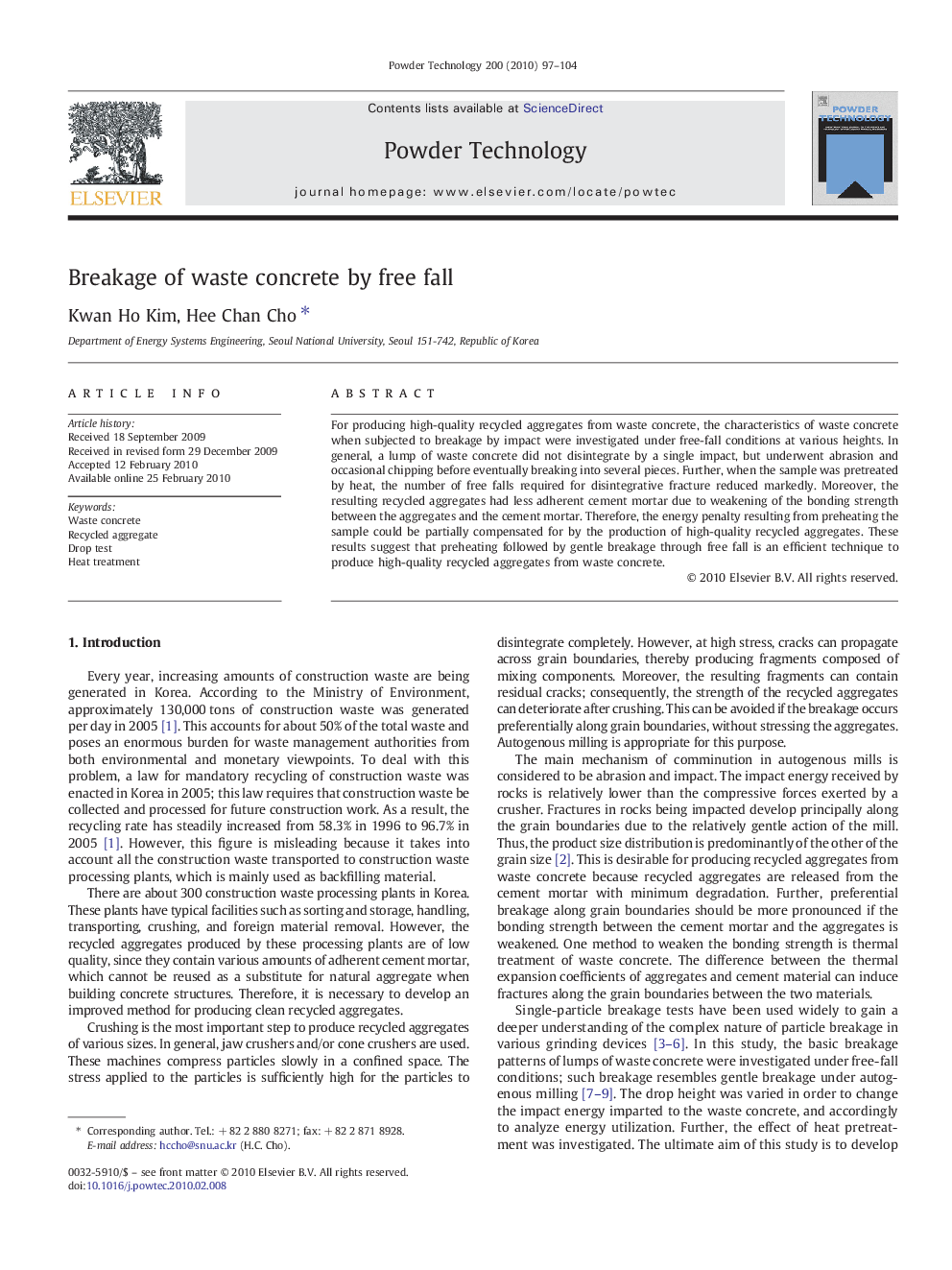| Article ID | Journal | Published Year | Pages | File Type |
|---|---|---|---|---|
| 238096 | Powder Technology | 2010 | 8 Pages |
For producing high-quality recycled aggregates from waste concrete, the characteristics of waste concrete when subjected to breakage by impact were investigated under free-fall conditions at various heights. In general, a lump of waste concrete did not disintegrate by a single impact, but underwent abrasion and occasional chipping before eventually breaking into several pieces. Further, when the sample was pretreated by heat, the number of free falls required for disintegrative fracture reduced markedly. Moreover, the resulting recycled aggregates had less adherent cement mortar due to weakening of the bonding strength between the aggregates and the cement mortar. Therefore, the energy penalty resulting from preheating the sample could be partially compensated for by the production of high-quality recycled aggregates. These results suggest that preheating followed by gentle breakage through free fall is an efficient technique to produce high-quality recycled aggregates from waste concrete.
Graphical abstractThe breakage and liberation characteristics of waste concretes were investigated by conducting drop tests under free-fall conditions. As the number of free falls increased, the lump eventually disintegrated into several pieces through damage accumulation. A simple model was developed to describe the evolution of the fragment size distribution in terms of the probabilities of abrasion, chipping, and fracture at the event of impact, and their corresponding fractional weight loss and breakage distributions.Figure optionsDownload full-size imageDownload as PowerPoint slide
